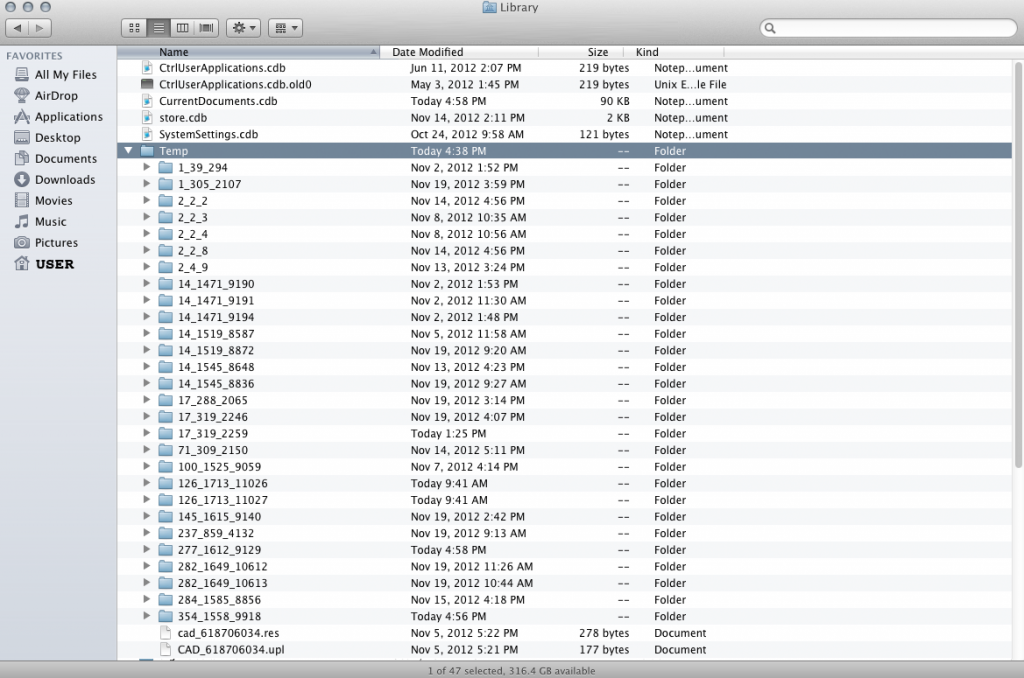

- #Word temp files on a mac how to#
- #Word temp files on a mac for mac#
- #Word temp files on a mac software#
- #Word temp files on a mac mac#
So pending your setup, likely you do NOT have CA RHA on your servers, but you may have backup software, settings in MS FSRM file screens, etc that could potentially have the same effect. Other programs do not seem to have this issue OR utilize a different 'temp' naming schema. With SMBv1 being such a security issue now, we had to figure out SMBv2 and discovered its not the protocol, but the apps using the protocol. I've been using CA RHA to replicate data for some time and previously we had SMBv2 intentionally disabled as we though this was the culprit, but after doing packet captures, it seems Office apps treat saving to remote source differently if connected via
#Word temp files on a mac mac#
_xxxx file attempting to be created,īut unlike Windows version of Office, Mac versions time out is much faster and so the save is canceled almost immediately. DS_Store files because of the garbage they generate (it starts to add up after terabytes of data) and I have a feeling the same thing is going on here, in the 'temp folder' there is a. tmp files as I don't want to 'sync/replicate' them I had them explicitly excluded.

#Word temp files on a mac software#
Our sync software was causing long delays as it was interfering with these. tmp file in the same directory when saving. We had a similar problem with Windows Office saves as Office apps, ONLY WHEN USING SMBv2, create a

I have a feeling it has to do with our Sync software (CA RHA). Our issue was worse as users could not save directly to the server at all. Where would we poor supporters be if we had not the backup of knowledgeable peopleįor us it was the setting: Word | Preferences | Save | Allow Background Saves This said, I of course appreciate your help very much.
#Word temp files on a mac for mac#
" I am not sure why your Word for Mac 2016 create the temporary file in a new folder." - The answer lies in the code! There mustīe the ifs and elses that test the conditions and decide to put the folder where we find them. I also wonder how other software could interfere? Preventing Office from deleting the folder? Or causing Office to create the folder in the wrong place or with he wrong permissions? Clearly as employees of the company that created the program, you shouldīe able to shed some more light on the issue and give some hints on what kind of "background process" one has to think of.
#Word temp files on a mac how to#
We too have the problem but very sporadic and we don't know how to repropduce the error. But the OP has never come back to report if he found the culprit. Then restart Word and allow it to do whatever it wants to do with the file.I don't understand why this has been marked as an answer. If it is not there, then copy a Word document to the AutoRecover folder and then rename it to the filename that Word is looking for. Look in the person's Recycle Bin and, if the file is still there, restore it. Make note of the desired file name the next time the error message comes up. If that doesn't work, you should consider giving Word the file it is looking for. (If you are unsure whether any other programs are using the folder, then simply change the location of the AutoRecover folder, in Word, to some new folder you create.) If you have another program that is using the same folder for storing information, it is possible that Word is incorrectly assuming that those files are, somehow, files that need to be recovered. You will also want to make sure that once you delete the files that nothing else is getting put in that folder. (You can see this on the File Locations tab of the Options dialog box.) Write down the path for the folder, then close Word and use Windows to delete everything in the folder. Second, look in Word for the location where it is storing AutoRecover files. Run the built-in Windows programs that check the disk and file structure for any errors, and correct any that show up. First, start by doing some diagnostics on the drive in question. There are a couple of things that can be tried. Kim is wondering how to best handle this situation. Now everyone enjoys the annoyance of every second opening of Word being greeted with the auto recovery pane seeking some user action for the same file. This file recovery request has now infiltrated its way other users on the LAN. As a result Word, on every second occasion, requests some action with the 'auto recovered' (now deleted) file. The user took no action to recover the file and, instead, physically deleted it. Ever since that time Word has repeatedly requested some attention to permanently recover the file. Kim recounts an experience where Word 2003 saved a file automatically during a time when the workstation shut down abnormally.


 0 kommentar(er)
0 kommentar(er)
